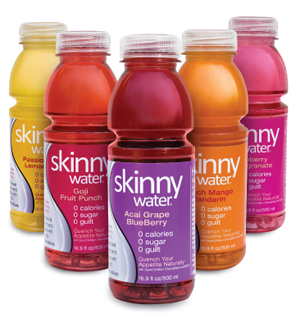BEST & WORST CHOICES
If you already follow a healthful meal plan filled with whole grains, fresh fruits and veggies, and lean protein, congratulations! You're on your way to a long, healthy life and are taking a major step in controlling your weight and blood glucose levels. Plus, you're probably already eating a bunch of the foods on this list.
For those who are taking the baby-steps approach to eating better, this list is even more helpful. This is a simple way to compare your best and worse choices for your diabetes. Stick to the best choices and you can enjoy without missing out while still keeping yourself healthy!
Breads, Grains, and Diabetes

Along with essential vitamins, minerals, and fiber, foods in this first category contain mostly complex carbohydrates that your body turns into sugar for energy. Even though carbs make glucose levels rise, complex carbs are absorbed more slowly than simple carbs, and you need carbs for energy. Use this list as a guide to help you choose the complex carbs that are best for you.
| Best Choices | Worst Choices |
| Whole-grain flours, such as whole wheat flour | White flour |
| Whole grains, such as brown rice | Processed grains, such as white rice |
| Cereals containing whole-grain ingredients and little added sugar | Cereals with little whole grain and lots of sugar |
| Whole-grain bread | White bread |
| Baked potato or baked steak fries | French fries |
| Whole-grain flour or corn tortillas | Fried white-flour tortillas |
Diabetes and Fruits
Fruits contain carbohydrates, vitamins, minerals, and fiber. They are naturally low in fat -- except for avocados -- and sodium. Fruits often contain more carbs than are found in vegetables.| Best Choices | Worst Choices |
| Frozen fruit or fruit canned in fruit juice | Canned fruit with heavy sugar syrup |
| Fresh fruit | Chewy fruit rolls |
| Sugar-free or low-sugar jam or preserves | Regular jam, jelly, and preserves (unless portion is kept small) |
| No-sugar-added applesauce | Sweetened applesauce |
| 100% fruit juice or low-carb juices | Fruit punch, fruit drinks, fruit juice drinks, sweetened soda |
Diabetes, Meat, and Other Protein
| Best Choices | Worst Choices |
| Baked, broiled, grilled, or stewed meats | Fried meats |
| Lower-fat cuts of meat, such as top sirloin | Higher-fat cuts of meat, such as ribs |
| Turkey bacon | Pork bacon |
| Low-fat cheeses | Regular cheeses |
| Skinless breast of chicken or turkey | Poultry with skin |
| Baked, broiled, steamed, or grilled fish | Fried fish |
| Tofu lightly sauteed, steamed, or cooked in soup | Fried tofu |
| Baked or stewed beans | Beans prepared with lard |
Diabetes and Dairy
| Best Choices | Worst Choices |
| 1% or skim milk | Whole milk |
| Low-fat yogurt | Regular yogurt |
| Low-fat cottage cheese | Regular cottage cheese |
| Nonfat sour cream | Regular sour cream |
| Frozen low-fat, low-carb yogurt | Regular ice cream |
| Nonfat half and half | Regular half and half |
Diabetes and Fats, Oils, and Sweets
Fats, oils, and sweets -- and foods containing them -- often provide lots of calories and little nutrition Many "snack foods" are filled with fats or oils and sugar. Eating too much of these kinds of foods can lead to weight gain making it harder to keep diabetes under control. That doesn't mean you
have to avoid fats, oils, and sweets altogether. Just select and eat
them wisely. Here are some suggestions.
| Best Choices | Worst Choices |
| Baked snacks, such as baked potato chips, baked corn chips, puffed rice, or corn snacks | Snacks fried in fat, such as potato chips, corn chips, pork rinds |
| Vegetable oils, non-hydrogenated butter spreads, margarine | Lard, hydrogenated vegetable shortening, butter |
| Reduced-fat mayonnaise Light salad dressings |
Regular mayonnaise Regular salad dressings |
| Air-popped or calorie-controlled popcorn | Butter-flavored stove-top popcorn |
Diabetes and Beverages
| Best Choices for Beverages | Worst Choices |
| Water, unflavored or flavored sparkling water | Regular sodas |
| Light beer, small amounts of wine or non-fruity mixed drinks | Regular beer, fruity mixed drinks, dessert wines |
| Unsweetened tea (add a slice of lemon) | Sweetened tea |
| Coffee, black or with added low fat milk and sugar substitute | Coffee with sugar and cream |
| Home-brewed coffee and hot chocolate | Flavored coffees and chocolate drinks |
| Sport drinks | Energy drinks |
Diabetes and Vegetables
Vegetables contain carbohydrates, vitamins, and minerals. They usually contain fewer carbs than fruits. Many vegetables contain fiber and are naturally low in fat and sodium (unless they are canned). Starchy vegetables, such as potatoes and corn, aren't included in this category. They are considered part of the breads, grains, and other starches group. Use this list to guide your shopping and cooking choices.| Best Choices | Worst Choices |
| Fresh vegetables, eaten raw or lightly steamed, roasted, or grilled Frozen vegetables, lightly steamed |
Canned vegetables with lots of added sodium Vegetables cooked with lots of added butter, cheese, or sauce |
| Fresh cucumbers | Pickles (only if you need to limit sodium otherwise pickles are a good choice) |
| Fresh shredded cabbage or coleslaw | Sauerkraut, (same as pickles, limit only if you have high blood pressure |


No comments:
Post a Comment